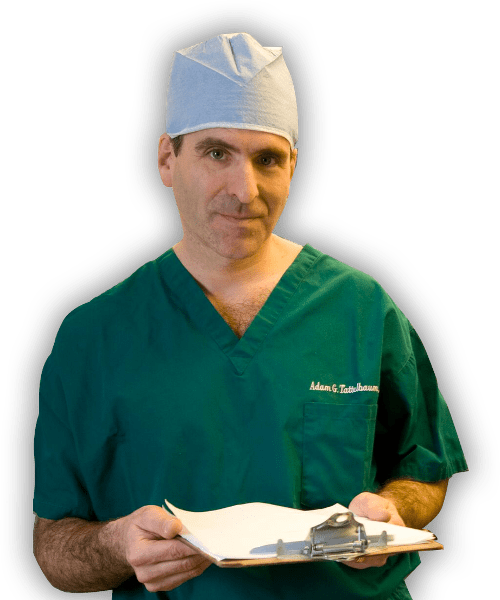Otoplasty Maryland
Dr. Adam Tattelbaum offers otoplasty procedures for patients in Maryland, Northern Virginia and Washington DC, from his offices in Rockville, MD, and Mclean, VA.
Book a free consultation with Dr. Tattelbaum to learn more.
A word from the Doctor…
Our genes can influence the shape and position of our ears. And as time goes by, our ears might undergo some changes too due to the natural aging process and the distribution of skin and fat.
If you’re finding it challenging to feel confident and comfortable with your ears, you may be interested in otoplasty.
Otoplasty is a procedure that requires a personalized approach since each person’s ear characteristics are unique.
So, if you’re curious and ready to do something about it, let’s set up a consultation. We’ll cover all this and create a bespoke plan of action for you.”
Written by Dr. Adam Tattelbaum, M.D.

- Double board-certified Maryland plastic surgeon
- Member of the American Society of Plastic Surgeons
- Member of the American Society for Aesthetic Plastic Surgery
- Listed in “America’s Top Surgeons” by the Consumer Research Council of America
What is otoplasty?
Otoplasty is a popular option for rejuvenating the face, as it can vastly improve the shape and position of your ears, giving you a more balanced and confident look.
Otoplasty options
- Ear reconstruction: Also known as ear augmentation, this form of surgery is best for patients who have not fully developed or are missing, elements of their outer ear. It also addresses traumatic injuries to the ear and possibly deformities.
- Ear Reduction: This type of surgery is for patients who have large or prominent ears and wish to reduce them, usually by altering the ear cartilage.
- Ear Pinning: This is one of the most common types of otoplasty. It’s ideal for individuals who want to reduce the space between the external structure of the ear and the head (also known as the conchal angle).
- Earlobe Surgery: Also known as lobuloplasty, this types of otoplasty fixes earlobe-specific issues, including tears, size, or lobe laxity. We’re often visited by those with large piercings and body modifications, who wish to restore their earlobe.
Otoplasty recovery
Your ears will be swollen after surgery, but this will go down after a few days. Your ears may also be bruised, and you may get some throbbing, itching or temporary numbness in the treated area.
It is very important that the bandages are not removed before your surgeon tells you to. It may be necessary to wear a headband after your bandages are removed to ensure they heal properly and keep the desired shape and position.
You should refrain from any rigorous activity until you are fully recovered and avoid using hair dryers or other objects that give out extreme heat or cold, as they may cause damage to numb ears.
Frequently asked questions
Am I a good candidate?
- Large or protruding ears
- Enlarged earlobes
- Cauliflower ears
- Lop ears (where the ear tips fold down and jut forward)
- Deformed or misshapen ears
- Very small ears
How does otoplasty work?
Incisions for otoplasty are usually placed behind the ear. The skin is then elevated in some areas, and the underlying cartilage framework is exposed. The cartilage is reshaped through scoring, suturing, limited removal, or a combination of these techniques.
The skin is re-draped, any excess skin is removed, and the incision behind the ear is closed. A gentle pressure dressing is placed on the head to put slight pressure on the ears and maintain their new position as well as to minimize swelling and excessive fluid accumulation beneath the skin. This dressing is usually removed in 5-7 days.
All incisions will be closed with stitches that dissolve and don’t have to be removed. You can wash your hair as soon as your head dressing is removed.
Is there anything I should consider before otoplasty?
- Symmetry: Your two ears are never the same size or shape. Though otoplasty can improve their shape and position, small differences will exist even after surgery.
- The risk of recurrence: Cartilage forms the framework of the ear. When moved, it tends to spring back to its original position. During surgery, weakening and shaping the cartilage reduces this tendency. However, if the cartilage is extremely resilient, or if there is an impact from scar tissue after surgery, ear prominence can reoccur in a very small number of patients. In those cases, a revision procedure may be necessary.
- General Risks: Risks common to all surgical procedures such as bleeding, infection and scar tissue formation occur in a very small percentage of cases. We will give you more detailed information about these and other rare risks in our written information and encourage you to discuss any concerns during your consultation.
What are the benefits of otoplasty?
Ear surgery can alter most aspects of your ears, such as:
- Ear shape
- Ear size, either to increase or decrease
- Ear symmetry
- Ear position on the head, such as pinning the ears closer to the head
How do I prepare for otoplasty?
Patients can also develop asymmetry during healing or excessive scarring if they are prone to such a thing.
It is common to feel some bumpiness of the scars in the corners of the eyes until the scars mature.
What are the risks and complications of ear surgery?
Potential complications include infection, blood clots, overcorrection, and an extremely rare risk of altered hearing. Infections can usually be treated with antibiotics, and blood clots are very uncommon but can be addressed if they occur.
Overcorrection is another possible risk following cosmetic ear surgery. The chance of this occurring can be reduced by ensuring you choose a surgeon who is skilled in performing ear surgery.
Hearing loss is extremely rare, and a highly skilled ear surgeon can evaluate the possibility of such a risk and take the necessary steps to avoid any hearing damage.
What should I avoid after otoplasty?
- Avoid any demanding activities or ones that may impact your ears
- Avoid any extreme heat and do not use blow dryers
- Try not to sleep on your sides until your ears are fully healed
- Get a lot of rest during the recovery process
- If you experience any complications, contact your doctor immediately
How much does otoplasty cost?
Location
We have two offices – one in Rockville, MD, and one in McLean, VA. Most of our patients come from Maryland, northern Virginia and Washington DC.
Schedule a free consultation
If you’re interested in otoplasty, the next step is to schedule a consultation with Dr. Tattelbaum.
The consultation lasts for roughly one hour. In the consultation, Dr. Tattelbaum will evaluate your health and starting situation, discuss your medical history, and answer any questions. Plus, we’ll cover the risks, benefits, and alternative options.

